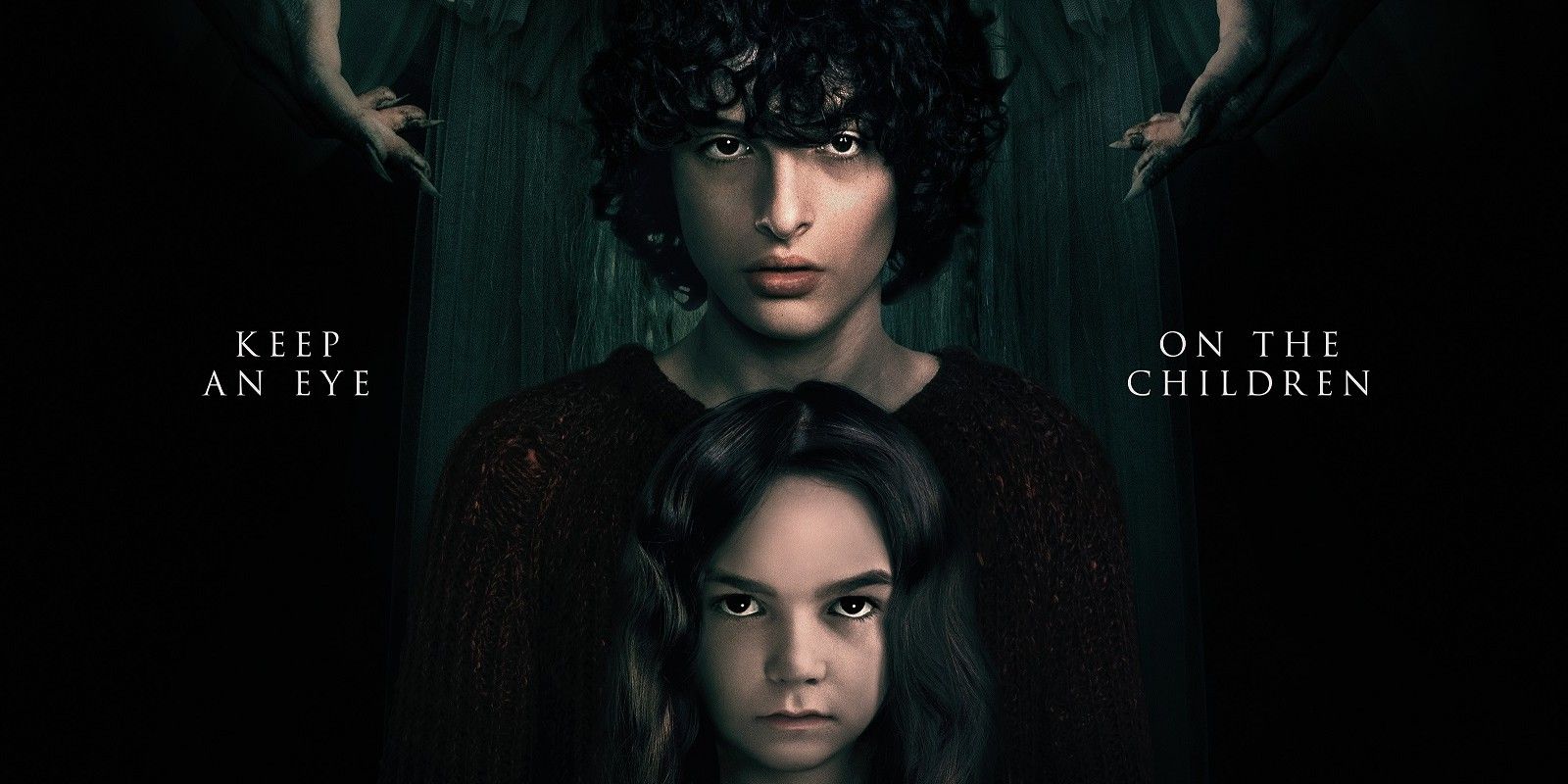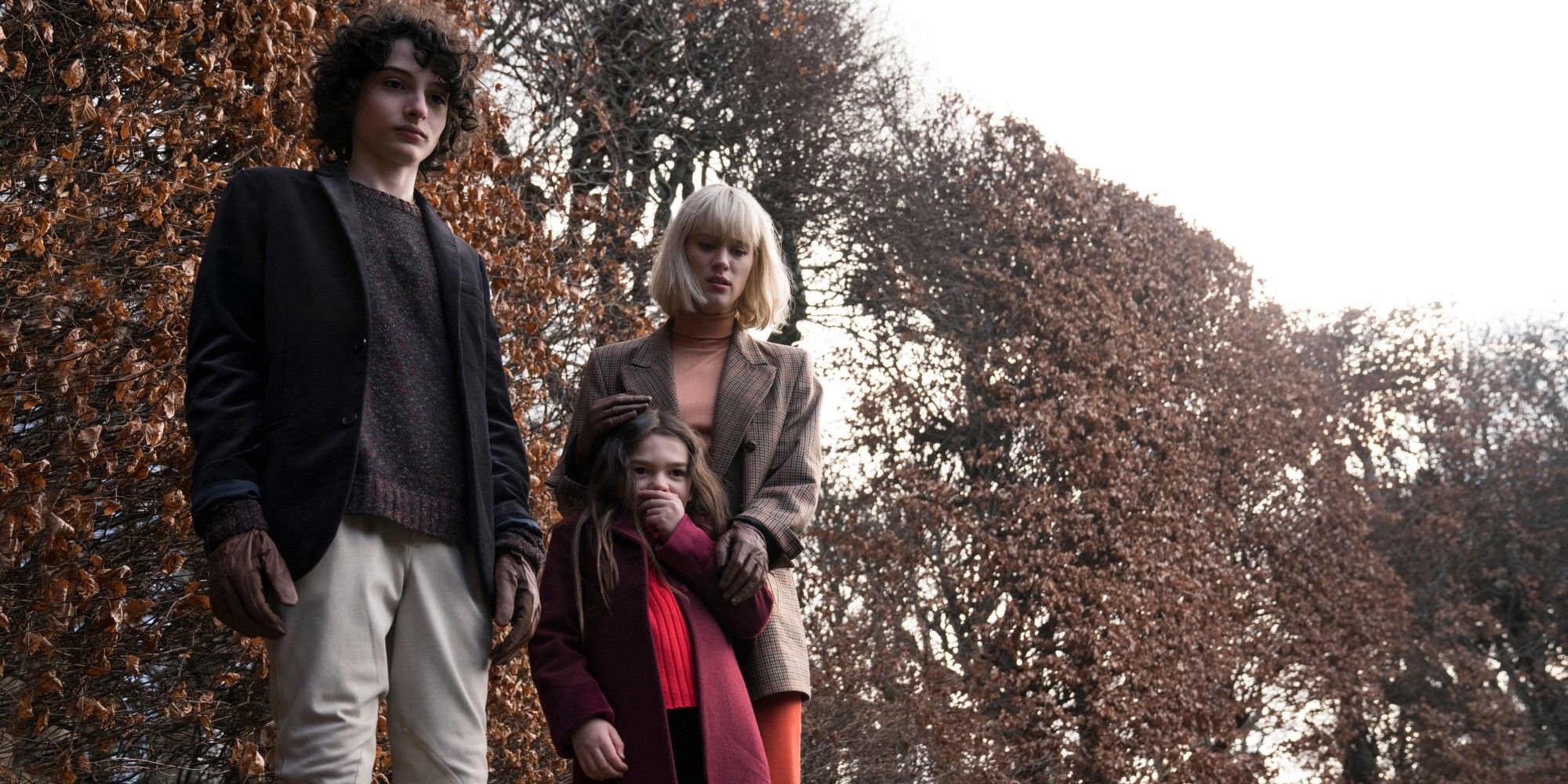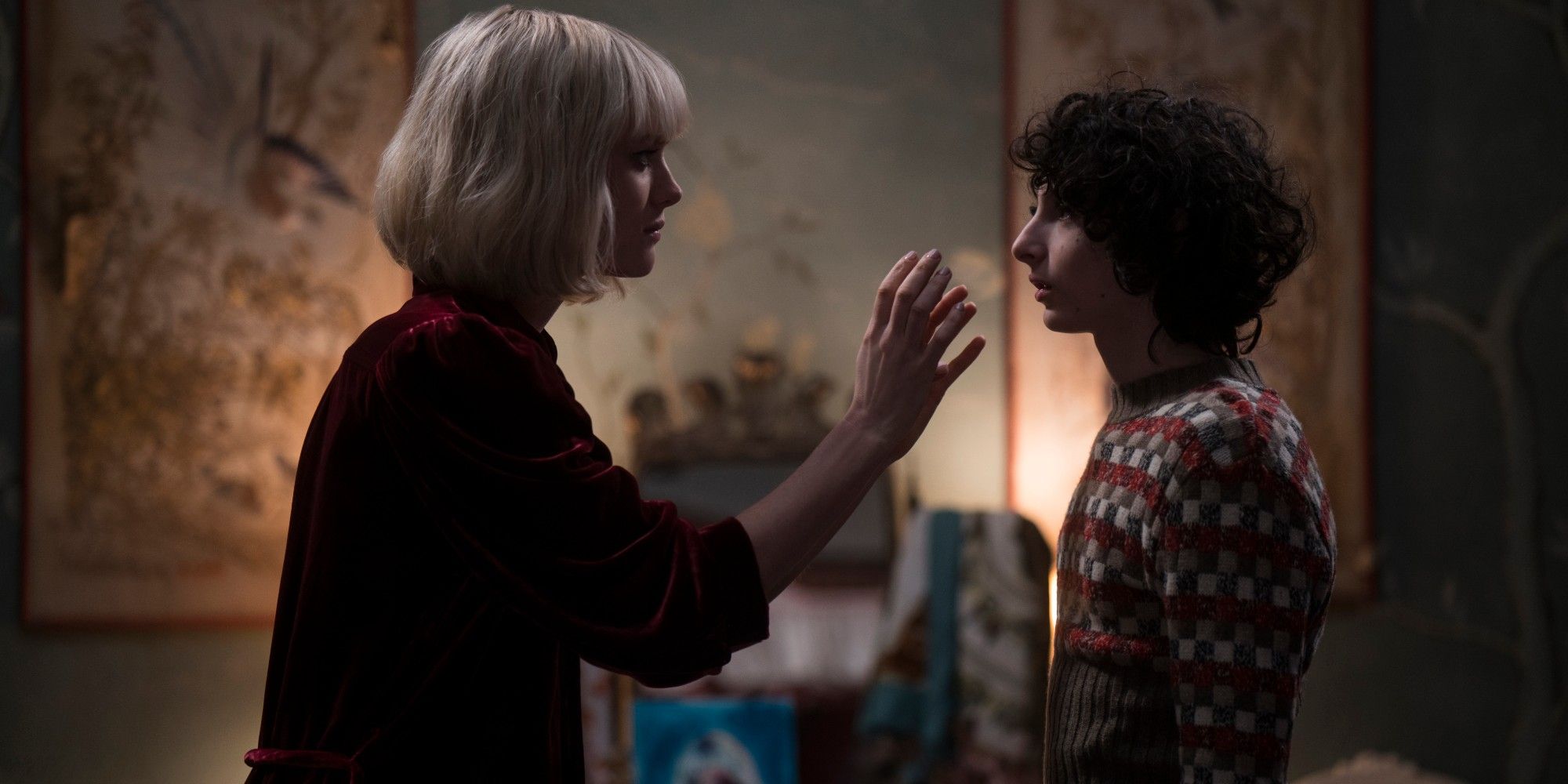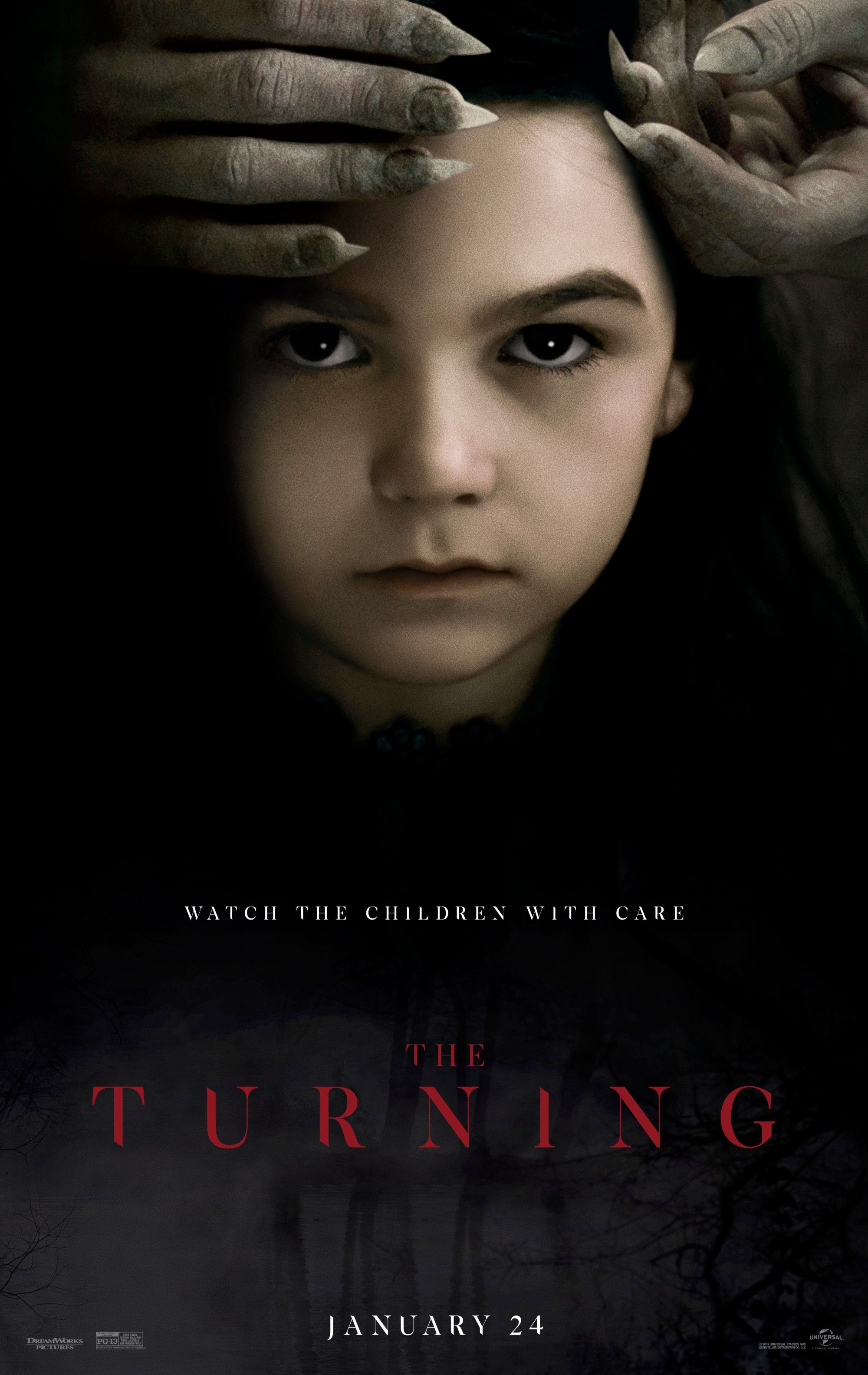It's difficult to pinpoint what, exactly, went wrong with The Turning. It's got classic source material (Henry James' 1898 gothic horror novella The Turn of the Screw), comes from The Conjuring writers Carey W. and Chad Hayes, and is filled with the sort of beautifully grungy and unsettling imagery director Floria Sigismondi became known for in her early music video work. At the end of the day, it seems its many flaws can be chalked up to lackluster execution and post-production fiddling that likely took place after it was delayed from early 2019 to the dumping ground of January 2020, as opposed to a lack of strong ideas and talent on both sides of the camera. The Turning is an atmospheric, if generic, psycho-horror movie that devolves into a confused and unintentionally tasteless mess during its third act.
Updating The Turn of the Screw's setting to the 1990s (as the movie establishes very early on by showing a news report about Kurt Cobain's recent death), The Turning stars Mackenzie Davis as Kate, a young woman who's hired to serve as a live-in caretaker for Flora (Brooklyn Prince), an idiosyncratic orphaned girl who lives with her troubled older brother Miles (Finn Wolfhard) at their family's decaying estate in the Main countryside, along with their family's housekeeper Mrs. Grose (Barbara Marten). The film seems to be a rush from the get-go, hurrying through the early scenes where we learn Kate has abandonment issues (her father left her when she was a child) and a mentally ill mother (Karen Egan) in order to get to the spooky house at the heart of its story. This sloppy character development comes back to bite the film later, when it tries to dive deeper into its narrative's themes and subtext.
To be fair, Flora and Miles live in a pretty dang creepy manor. Production designer Paki Smith and set decorator Justine Wright (no strangers to gothic fare, having previously worked on the biopic Mary Shelley) fill their home with spooky paintings, freaky statues, even freakier broken doll faces, and more rooms full of nightmares - to quote Leslie Jones from Ghostbusters 2016 - than you can shake a stick at. But in spite of all this attention to detail and the eerie lighting of David Ungaro's cinematography (Ungaro is another Mary Shelly veteran), The Turning's jump scares tend to be loud and clumsily edited, presumably to hide the film's not so impressive CGI specters as much as possible. You want to lose yourself in the film's modern technology-free environments and labyrinth set pieces, but you end up spending more time trying to figure out what's even happening whenever something goes bump in the night.
Moviegoers aren't the only ones who spend a healthy chunk of The Turning wondering what's really going on, either. Shortly after arriving, Kate is quick to realize Flora, Miles, and Mrs. Grose are all sitting on some dark secrets, even before she begins seeing (or, rather, thinks she sees) ghosts hanging around her new home. The character doesn't get a whole lot of personality beyond her parent-related issues and love of moody '90s-era music, but Davis commits to the role, especially when Kate is either bonding with Flora (Prince, just as charming here as in The Florida Project and The LEGO Movie 2) or starting to unravel from the stress of having to deal with the threatening and entitled Miles, who's played pitch-perfectly by Wolfhard. Admittedly, though, Marten feels a little out of place with her Hammer Horror-style acting alongside these more grounded performances, even if she's fun on her own terms.
There's nothing really terrible about The Turning either, until the third act rolls around. After throwing in a disturbing twist, the film tries to pull the rug out from the audiences' feet with a second turn (er, pardon the phrasing) that's meant to wrap things up on an ambiguous note, but feels more like a non-ending than anything. Unfortunately, the whole thing ends up leaving a bad taste in your mouth because, rather than using its first big reveal to payoff the movie's themes about where children learn their toxic behavior from and how adults (women included) can be complicit in allowing cycles of abuse to continue, The Turning shifts its focus to another sensitive topic (mental illness) it's mostly neglected up to that point. More than any other part of the film, this is where it feels like The Turning must've been chopped down from a longer cut that dealt with these issues in a less exploitative manner.
As a whole, The Turning is a triumph of style over substance that might've well made for a perfectly middle of the road horror film, had it not been edited down to the point of becoming incoherent by the end (its trailer alone contains footage that's not in the theatrical cut). Credit goes to Sigismondi and her crew for making a valiant effort at updating Turn of the Screw's gothic narrative, even if their attempts at modernizing the story's themes - including, the long-debated question of whether the story's ghosts are real or exist solely in its protagonist's head - simply don't pan out as hoped. The Turning was always unlikely to unseat Jack Clayton's The Innocents as what's generally regarded to be the best movie version of James' novella, but it had the potential to be far better than the forgettable mess it is. Thank goodness there's still The Haunting of Bly Manor to look forward to later this year.
The Turning is now playing in U.S. theaters nationwide. It is 94 minutes long and is rated PG-13 for terror, violence, disturbing images, brief strong language and some suggestive content.




